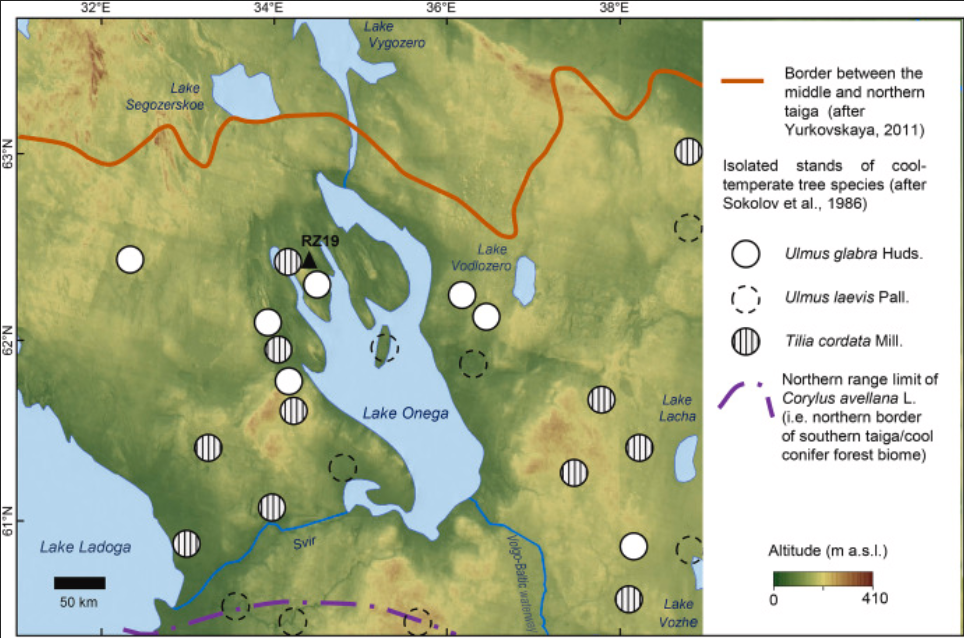Congratulations to Aleksandra Krikunova and co-authors on the recent publication of their article in Journal of Quaternary International!
Title: Postglacial vegetation and climate change in the lake Onega region of eastern Fennoscandia derived from a radiocarbon-dated pollen record
Authors: Krikunova, AI, Savelieva LA, Long T, Leipe C, Kobe F, Kostromina, NA, Vasilyeva AV, Tarasov, PE.
Abstract:
With its numerous environmental archives stored in lake and peat sediments and relatively low human pressure, the Lake Onega region in eastern Fennoscandia is regarded as a particularly promising area for studying past changes in vegetation and climate since the Lateglacial period. The 885-cm-long sediment core RZ19 (62°27′53″N, 34°26′4″E) was collected from Razlomnoe Peat on the northern shore of Lake Onega in 2019, radiocarbon-dated and analysed for pollen and cryptogam spores. The age-depth model suggests continuous sedimentation since ca. 11,800 a BP (all ages given in years (a) or kiloyears (ka) before present (BP) with BP referring to 1950 CE). The results of pollen analysis and pollen-based biome reconstruction show rapid afforestation of the area in the Early Holocene, although the scores of the tundra biome remain relatively high prior to ca. 11,450 a BP, suggesting that the vegetation was likely more open than today. Between 8300 and 8000 a BP, Betula sect. Albae shows a marked increase in pollen percentage, while Pinus sylvestris experiences a marked decrease. These changes coinciding with the 8.2 ka BP cooling event indicate less favourable conditions for Scots pine while being beneficial for fast-growing birch. The transition from the Early to Middle Holocene (i.e. from Greenlandian to Northgrippian) is marked by an increase in pollen productivity, spread of Picea and further afforestation of the area. The decrease in arboreal and Picea pollen percentages and the abrupt increase in landscape openness after ca. 4000 a BP mark the onset of the Late Holocene (i.e. Northgrippian-Meghalayan transition) and likely reflect the combined effect of insolation-induced temperature decrease and associated paludification and forest retreat rather than a decrease in atmospheric precipitation and/or spread of Late Neolithic agriculture.
Congratulations to Aleksandra all co-authors!
Photo from article: Fig. 2. Topographic map of the study region showing modern vegetation boundaries (after Yurkovskaya, 2011) and distribution of the thermophilic tree/shrub taxa discussed in the text (after Sokolov et al., 1986).



